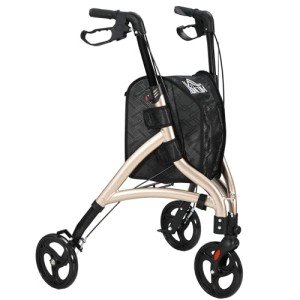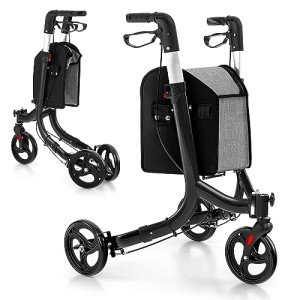Jake Kethel
Blog entry by Jake Kethel
A Comprehensive Guide to Senior Walkers: Enhancing Mobility and Independence
As people age, preserving mobility ends up being important for maintaining self-reliance and quality of life. For many seniors, walking aids such as walkers offer a valued solution to help them navigate their environment safely and with confidence. This short article explores the multifaceted world of senior walkers, including their types, benefits, usage, and some frequently asked concerns.
Comprehending Senior Walkers
Walkers, typically referred to as walking frames, are mobility aids designed to supply assistance and balance for individuals who may have problem walking individually. They normally consist of a sturdy frame, grips for holding, and often, wheels for ease of motion. Understanding the different kinds of walkers available can assist seniors and their caretakers make knowledgeable decisions.
Types of Senior Walkers
| Walker Type | Description | Best For |
|---|---|---|
| Standard Walker | A four-legged frame that must be raised to move forward. | Seniors requiring maximum stability. |
| Two-Wheeled Walker | A walker with 2 wheels on the front for much easier mobility. | Those with small balance problems. |
| Four-Wheeled Walker | A walker with four wheels, frequently consists of a seat and brakes. | Active seniors requiring mobility and rest periods. |
| Rollator Walker | A type of four-wheeled walker that is lightweight and foldable. | Seniors who are more active and need minor support. |
| Platform Walker | A specialized walker with a platform for assistance, often utilized in physical therapy. | People requiring specific assistance for injuries. |
Benefits of Using Senior Walkers
Senior walkers offer many benefits that significantly improve the mobility and independence of elderly people. Here are a few of the most significant benefits:
- Increased Stability: Provides a strong base of assistance, lowering the danger of falls.
- Enhanced Confidence: Encourages movement and can relieve anxiety about walking.
- Enhanced Posture: Helps maintain an upright posture while walking.
- Social Engagement: Facilitates participation in social activities by allowing mobility.
- Therapeutic Use: Can be utilized throughout rehab to improve strength and balance.
Choosing the Right Walker
When choosing a walker, different elements need to be considered to guarantee the very best fit. Below are bottom lines seniors or caregivers should evaluate:
- Weight Capacity: Ensure the walker can support the user's weight.
- Height Adjustability: A correct height change is important for comfort and efficiency.
- Mobility Needs: Consider the user's particular requirements, such as level of stability needed.
- Lifestyle Factors: Think about where the walker will be used and how frequently.
Correct Use of Walkers
To make the most of the benefits and reduce threats associated with walkers, correct use techniques are necessary. Here are actions seniors need to follow:

- Stand in the Walker: Position the walker in front of them, guaranteeing it is steady.
- Grip the Handles: Hold the deals with firmly, ensuring a comfy grip.
- Walk Inside the Frame: Move forward by taking small actions, ensuring the front legs of the walker remain on the ground.
- Turn with Care: To alter instructions, pivot on the feet while moving the walker.
- Use Cautiously: Avoid hurrying and remember to take breaks when tired.
Frequently Asked Questions (FAQs)
What is the typical rate of a senior walker?
The cost of senior walkers can vary based on functions and products utilized. Requirement walkers may cost as low as ₤ 30, while innovative models with wheels and seats may range from ₤ 50 to ₤ 150.
How do I figure out if my loved one requires a walker?
Indications that a Senior Walker might require a walker can consist of frequent stumbling or losing balance, a recent surgery or injury impacting mobility, and preventing walking or taking part in social activities.
Can a walker help with rehab workouts?
Yes, walkers can be a vital part of physical therapy, helping seniors restore strength and dexterity through safe motion.
Where can I buy a senior walker?
Walkers can be purchased at medical supply stores, drug stores, or online merchants. Some insurance plans may even cover part of the cost.
How do I maintain a senior walker?
Regular upkeep involves checking for loose parts, guaranteeing brakes operate properly, and cleaning the frame to prevent rust or wear.

Senior walkers are an indispensable resource for maintaining mobility and independence as one ages. With different kinds of walkers available, it is important for seniors and caretakers to consider individual requirements, usage, and convenience when selecting a proper walking aid. By motivating safe mobility, walkers not just boost physical capabilities but also favorably effect social connections and psychological wellbeing.
Through appropriate usage and care, seniors can delight in an active, interesting way of life, reinforced by the assistance of their walker. Understanding the value of mobility aids like walkers is essential in promoting improved life quality for seniors dealing with mobility obstacles.